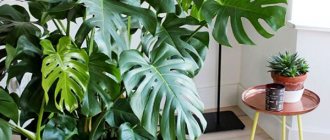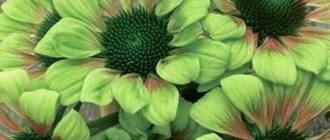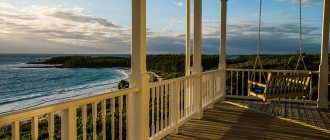Areca
Areca Palm / freshpetals.in
This palm has fairly thin, erect stems and large, feathery leaves. At home it does not stretch more than a few meters, but in the natural environment it is much higher. Over the course of a year, he gains a couple of tens of centimeters in height.
Place the plant in a well-lit place near an east or west window. On the south side it is advisable to provide shade from the midday heat. To ensure that the palm tree develops evenly, rotate it relative to the light source twice a month. Avoid drafts, especially in the cold season.
Water deeply every few days after the soil in the pot dries out slightly. It is better to avoid overwatering and waterlogging, as this may cause the plant to die. Spraying is recommended every couple of days, especially in rooms with dry and warm air.
False palms
There are several indoor plants that look similar to palm trees, but they are different species. It is more profitable to plant them, since the flowers grow slowly and, as adults, fit in apartments. These are mainly hybrid adapted varieties of indoor palm trees, which are much easier to care for in a pot at home.
In nature, palm-like flowers grow very large, but at home they are much smaller.
A variety of domestic palm is the Yucca plant with a thick trunk and a bunch of wide leaves growing in a spiral. If the yucca likes its growing conditions, the lower leaves do not die off, and it turns into a spreading tree.
You can choose yucca of any color - green, with white veins, purple. Those trees that have several branches are expensive in stores, since it takes a long time for side shoots to grow.
Washingtonia
Washingtonia filamentous / m.syedgarden.in
This palm got its name in honor of the American president. In nature, it reaches a height of more than 20 meters, and the trunk diameter often exceeds 1 meter. In cramped home conditions, the palm tree is much smaller, up to 2–4 meters, but it needs a spacious place. Washingtonia's growth rate is average.
Place it in bright, indirect light, such as near a southeast or southwest window. It is better to shade from direct afternoon sun. Several times a month, turn your other side to the light source. In winter, when daylight hours are short, it is better to provide additional lighting. In summer, the palm tree can be taken outside, the main thing is to protect it from the sun and rain.
Water every few days in the summer as the top layer of soil dries out. In winter, during the rest period - once a week and a half. Waterlogging of the soil and its complete drying out are equally dangerous. In the cold season, when the air is dry due to heating, Washingtonia needs to be sprayed a couple of times a week.
Kariota
Kariota tender / palmtalk.org
This palm is distinguished by its unusual leaf shape. They are quite large, dissected and double-pinnate, and in appearance they somewhat resemble fish tails. In indoor conditions, karyote grows up to 2 meters in height, and in nature it is 10 times higher.
Place the palm tree in a location with bright and indirect lighting, but not in direct sunlight. In winter, it is better to provide additional lighting with fluorescent lamps. Once every couple of weeks the pot should be rotated, so the crown will develop evenly. Drafts and sudden changes in temperature are dangerous for caryotes in any season.
During the warm season, water once every few days, as soon as the soil on top of the pot dries out. In winter - a little less often, so that the soil has time to dry 4-5 centimeters deep. In the heat of summer and winter, when the air becomes dry, spray the palm tree at least once a day.
Distinctive features of the palm tree
Some types of indoor palm trees can grow in partial shade, allowing you to create interesting corners in the room, the center of which is an exotic plant.
With the help of such crops, loggias and verandas are often landscaped. Even in a place with harsh winters, they are an integral part of the garden in summer, where plants are usually taken out directly in tubs. In total, there are about 2,800 species of palm trees on the planet . Their main difference from most plants is that the leaves are located at the top. But there are also species in which the leaf blades start from the root bud itself. Based on the characteristics of the trunk and leaves, there are the following divisions of indoor palm trees, which are called as follows:
- Reed. These species include Rapus and Hamedorea. The stems of these plants are tall, thin, reed-like. By the way, these crops are blooming.
- Cirrus (pinnate). The most popular pinnates are: Hamedorea eleganta, Howea Belmora and Forestera, Robelen date palm, Canary date, Gomuti, Raffia. These crops are distinguished by the presence of narrow leaves that are curved in an arch. They can grow upward or be straight. In addition to this group, palm trees are both hard and soft.
- Fan. This includes Hamerops tall and squat, Rapis tall, Washingtonia, Livistonia chinensis (Asian). The trunk splits into several segments that extend from the center, looking like a round fan. They grow very large, and the cuttings have thorns.
- Sagoceae. False palms, but at the same time they look like real ones. Only one species is grown for decorative purposes - Cycad avertus. This plant is a low palm tree that has a cone-shaped small trunk, from which long feathery leaves emanate.
- Fish tail. Kariota can be classified as this species. The leaves resemble a fish tail: the fins are triangular or diamond-shaped, which is where the name comes from. These palms are considered one of the fastest growing. Externally, the leaves resemble torn corn leaves.
Quite often, inexperienced gardeners mistake plants that resemble them in appearance for palm trees. For example, bat palms, yuccas or dracaenas.
Liviston
Chinese Livistona / theindoorgarden.com
In nature, Livistona can grow up to 20 meters and higher, and in apartments - up to 2-3 meters. This palm tree has a small trunk with large and rounded leaves on long petioles. It grows quite quickly and, with proper care, adds several leaves per year.
Place the plant, for example, near an east or west window where there is bright, indirect sunlight. On southern windows you will need shading from the midday sun in spring and summer. A couple of times a month, turn the palm tree to the window with the other side. In the warm season, Livistona can be taken out into the open air, but protected from the heat. Wintering is preferably cool, at a temperature of about 16 °C.
In summer, water once every few days, as soon as the top layer of soil dries. In winter - more moderately, but without completely drying out the earthen coma. It is advisable to spray the plant 1-2 times a day.
Is a palm tree a “bad” gift?
As it turned out, among the numerous list of unwanted gifts - socks, mirrors, wallets and other things, there is also a palm tree... What did it do - beautiful, original and associated with a lot of positive superstitions - to deserve such a position?
- The first sign is associated not only with this tropical guest, but also with all living plants and animals - it is believed that “the inhabitant will not find a place for himself in the new home and will look for ways to return to his previous owners.” But, solving the problem with a “living” gift can be easily and simply - if you are given a palm tree, but the omen does not allow you to accept it (oh, how difficult it is for a gardener to refuse such a gift...), then you can give the donor a “ransom” - a symbolic payment in the form coins or small bills.
- Another superstition that the palm tree brings illness and misfortune into the house (it is not known what is connected with it), flower growers managed to get around - the gift tree is wheeled into the home on a stroller or bicycle.
- A gift in the form of a large palm tree will cause quarrels - perhaps if not everyone in the house likes the palm tree.
In addition, there is a sign that if the donor is jealous of the beauty of a tropical tree, it will soon wither. But experienced flower growers see the reasons for the stunting of the plant in something else - the inability of the new owners to care for the southern beauty, because most palm trees need special conditions. Therefore, if a palm tree is sent to the house of a beginner in plant growing, it is worth supplementing the gift with special literature on the topic of breeding and keeping palm trees.
Likyala
Licuala thyroid / oxleynursery.com.au
This palm has large, corrugated, rounded leaves. In appearance they resemble a fan and reach a meter in width in some species. Likuala is quite short, in nature it is no higher than 2–3 meters, and at home it is often lower.
Place the plant in bright and diffused light, for example near an east or west window. From the midday sun on the south side, unsightly burn marks will appear on the leaves over time.
Water deeply every couple of days to prevent the top layer of soil from drying out completely. During a cool winter, the intervals between moisturizing should be increased, but during a warm winter, it is better to stick to the usual schedule. In summer, the likuala should be sprayed at least once a day or two, in cold weather - less often.
Home palm trees: photos
SAMSUNGNote! We are renovating the apartment. Washing wallpaper in interior design
Let's discuss this article together:
Click to cancel reply.
Rapis
Rapis tall / atriumplants.co.za
The leaves of this multi-stemmed palm are fan-shaped and dissected, on long petioles. The height of the plant depends on the species. So, low rapis reaches an average of one and a half meters, and tall rapis reaches up to three. Therefore, the first option is preferable for small apartments, while the second prefers a larger room.
Place the pot near an east or west window so that the plant gets enough bright, indirect light. Do not forget to turn the palm tree a couple of times a month, so the crown will be uniform. In the warm season, rapis can be taken out into the open air. Wintering is preferably cool, at a temperature of about 16 ° C, although the palm tree tolerates normal room conditions normally.
In summer, water deeply and often, once every few days. It is important that the soil remains slightly moist, but does not turn into a swamp, which can cause the roots to rot. Drying the soil is also undesirable. If kept cool in the winter, water less often and do not change the schedule if the plant remains at room temperature. A palm tree standing in a warm room with dry air, for example from radiators, needs to be sprayed once every couple of days.
Wallpaper: palm trees, tropics and gardens of Eden are trending
On the wallpaper there are orchids, palm trees, ferns, pineapples... The tropics are an important theme in the collections of recent years. Leading publishers declared their love for distant thickets and tropical flora, proposing to bring into our interior the texture of the landscapes of Cambodia or, in extreme cases, the Croisette. At the same time, exotic vegetation appears in close-up. A recurring motif is the design of a pointed palm leaf, so beloved during the Art Deco era.
Croisette. Christian Lacroix for Designers Guild.
Long-distance travel fuels the imagination of designers. Routes: Indochina, the Caribbean, Madagascar, the “land of bliss” - the mythical island of Avalon and other exotics set the tone. The green color, which is so invigorating and has a beneficial effect on the nervous system, acquires tropical richness or, on the contrary, night shadow. The palette ranges from emerald to blue and muted black. Translated into black and white, the vibrant print looks sophisticated and has a timeless perspective. Luxurious offerings from top brands include multifaceted compositions with a 3D effect, complex shades and impeccable graphics in the spirit of pastels by the fashionable Parisian artist Julien Colombier. Among the authors of tropical walls are the creative director of Christian Lacroix Sasha Walckhoff, fashion illustrator Pierre Marie, fashion designers Matthew Williamson and Julian MacDonald.
Fantasque collection from Osborne & Little. 2020.
1. Jardin d'Osier, Hermès.
An Indian garden with flowers, shrubs and fountains - an original drawing by artist Pierre Marie reflects a sophisticated world where floral abundance is a symbol of tranquility and well-being. The image is created in the spirit of primitive art, decorative and optimistic.
Wallpaper Jardin d'Osier, Hermès. Design by Pierre Marie.
Wallpaper Jardin d'Osier, Hermès. Design by Pierre Marie.
Wallpaper Jardin d'Osier, Hermès. Design by Pierre Marie.
2. Eden Roc. Christian Lacroix for Designers Guild.
Non-woven wallpaper with a pattern of palm leaves. Zinc shades are enhanced by a metallic sheen. There is a spectacular option in b/w.
Eden Roc. Christian Lacroix for Designers Guild.
Eden Roc. Christian Lacroix for Designers Guild.
Eden Roc, Canopy, Aqua Parati - Christian Lacroix for Designers Guild.
Another of the many options for a floral motif from Christian Lacroix is a picturesque panorama of the Croisette in Cannes. The French Riviera as an inspiring decor in delicate sepia tones.
Also: Christian Lacroix and fashion park in the anniversary collection
3. Tropicana collection, Cubana wallpaper - designed by Matthew Williamson and Fantasque collection for Osborne & Little.
British brand Osborne & Little has a keen sense of fashion. It’s no wonder that his most extravagant and color-rich collections are designed by fashion designer Matthew Williamson. Along with the Tropicana collection with palm leaves (2013), they presented the Eden collection - a beautiful and luxurious “garden of pleasures”, flowers of paradise and birds. The Fantasque collection (2016) is dedicated to the artistic and cultural movements of the early twentieth century. It impresses with its dynamic 3D geometry.
Tropicana collection, Cubana wallpaper. Matthew Williamson for Osborne & Little.
4. Honolulu, designed by Julien MacDonald, Graham & Brown.
Palm leaves in dark and neutral shades - in an exquisite series by British fashion designer Julian MacDonald, a master of understated glamor and professor at the University of Wales at Newport. “Honolulu” is published by Graham & Brown, an English company with a rich history that produces exclusive paper wallpaper.
Honolulu. Graham & Brown.
Honolulu. Graham & Brown.
5. Panoramic Eden wallpaper from de Gournay.
The English brand de Gournay is known for its luxurious proposals for decorating formal rooms. It was founded in 1986 by Claude Cecil Gournay. Specialization: wall coverings, textiles and hand-painted porcelain, decorative details. Panoramic wallpapers by de Gournay convey images of Paladian villas and chambers of Versailles and decorate the walls of famous hotels and modern palaces.
Panoramic wallpaper Eden design in Van Gogh's painting technique. de Gournay. Fragment.
6. Palmeral Collection. House of Hackney.
London-based House of Hackney prides itself on its Palmeral wallpaper. The collection references the famous Loddidge glasshouses in Hackney. The greenhouses were famous in Victorian times for their huge collection of orchids and palms. The Palmeral pattern is available not only on wallpaper, but also on curtains, curtains, velvet and cotton upholstery, and bed linen. Shades: from yellow and grass to sea wave and charcoal black.
Palmeral. House of Hackney.
Palmeral. House of Hackney.
Palmeral. House of Hackney.
Palmeral. House of Hackney.
7. Papagayo, Amazone, Bananier, Mauritius by Pierre Frey.
French brand Pierre Frey constantly interprets the theme of tropical flora. The 2020 offering is the equatorial jungle of the South American continent. The Papagayo print is created using authentic Aztec designs, and the Amazone collection widely conveys the types of cacti and pineapples that Pierre Frey declared the most popular this season.
Papagayo. Collection from Pierre Frey.
Amazone. Collection from Pierre Frey.
Bananier. Collection from Pierre Frey.
Mauritius. Collection from Pierre Frey.
Mauritius. Collection Pierre Frey.
And also Marcel Wanders, the garden of the monster and Pierre Frey in Paris
8. Panoramic wallpaper from
Ananbô .
The Bordeaux manufactory strictly follows the rich traditions of French painting of the 18th century. The collections have eloquent names: Borneo, Bali, Malabar, the banks of the Nile, Okavango fishermen, etc. Two-meter, five-meter and eight-meter panoramic landscapes can be made in sepia, engraving, grisaille, and, of course, in color.
Lombok. Wallpaper by Ananbô.
Wallpaper by Ananbô.
Date palm
Date Robelena / tipsbulletin.com
This palm tree with feathery leaves on long petioles grows up to 2 meters at home. It is easy to care for, which explains its popularity among gardeners. But you won’t get tasty fruits, since creating optimal conditions for flowering and pollination in an apartment is problematic.
Place the date palm near a window that faces south, southwest or southeast. For normal growth, it requires sufficient light and protection from drafts. From late spring to autumn you can take the plant out into the open air.
Water once every few days in the warm season and a little less often in the cold season. If possible, spray the leaves daily and wipe off dust monthly.
Palm-like plants
The group of palm-like plants includes species that only vaguely resemble in appearance representatives of the Arecaceae family. Often these are herbaceous plants or succulents; there is a shrub with fruits that taste identical to dates, but they are classified as palm trees only by popular imagination.
Brighamy
Hawaiian palm Brighamia is a perennial succulent from the Campanaceae family, endemic to the Hawaiian archipelago. A short-lived plant that is on the verge of extinction - only a few specimens remain in nature under protection in Na Pali Coast National Park, located on the island of Kauai.
The plant has a thick, unbranched stem, reaching a height of 1–2 m, less often 5 m. At its crown there is a rosette of fleshy, spoon-shaped leaves. It blooms in autumn with fragrant funnel-shaped flowers of lemon or cream color, forming an inflorescence of 3-8 pieces.
Karlyudovik
Panama palm Carludovica (Carludovica) is a low palm-shaped plant from the Cyclantaceae family - only 4 species in the genus, common in the tropical latitudes of America. Named after the Spanish monarch Charles IV. Leaves on long petioles are beautifully fan-shaped, three or five dissected. The flowers resemble balls on a cylindrical cob, the fruits are tetrahedral berries.
Banana Palm Banana
Banana palm Banana (Musa) is a herbaceous plant of the Banana family, in nature it grows up to 7 m. It is widespread in Southeast Asia, but mostly on the islands of the Malay Archipelago. The genus includes up to 70 species of large herbs, which are often mistaken for trees, with a powerful root system and a very short trunk that practically does not protrude above the soil surface.
What many people mistake for a trunk are actually tightly fitting leaf sheaths - large, oval, soft.
When the plant is about to bloom, a long peduncle is formed inside this false stem, raising upward a brush with male and female flowers of purple or greenish color.
Castor palm
The castor palm (Ricinus) is the only herbaceous plant in the genus, the castor plant, which belongs to the Euphorbiaceae family. In temperate latitudes it is considered a medicinal, oilseed and gardening annual crop; in tropical regions it grows as an evergreen shrub. Supposedly originates from Ethiopia, but has spread throughout the world.
In some countries it has been grown for more than 4 thousand years.
The stems are hollow, growing vertically, and have different shades - purple, reddish-burgundy, pink or almost black. The leaves are huge, sometimes reaching 80 cm in diameter, with a beautiful maple-like shape on long petioles. The flowers in the axillary inflorescences are small and inconspicuous, but the spiny fruit capsules with oval seeds inside look quite exotic.
Snake Palm Amorphophallus
Snake palm Amorphophallus is a tuberous plant from the Araceae family. The genus consists of 170 species found in West Africa and the Pacific Islands. One of the species has the largest inflorescence in the plant world, 2.5 m high, with the most unpleasant smell of rotten fish and spoiled eggs.
It grows from an underground turnip-shaped tuber, throwing out only one tripartite leaf, very rarely - 2-3.
The inflorescence is an elongated spadix, wrapped in a blanket, white-green on the outside, crimson or purple on the inside.
Real jujube
Unabi Chinese date, or real jujube (Ziziphus jujuba) - the species belongs to the genus Jujube of the Buckthorn family. A small tree or shrub with thick bark and simple oval leaves. It blooms with inconspicuous miniature light green-white flowers.
The fruits are very tasty and juicy drupes with sweet reddish-brown pulp, reminiscent of dates in taste.
Sago Palm Cycas
Cycas sago palm (Cycas) is a cycad from the genus of the same name, which is the only one in the Cycas family, consisting of 90 species. It lives in Asia, Indonesia, the Pacific Islands, as well as Australia and Madagascar. It is very similar to a palm tree, grows up to 15 m in height, the trunk is thick in circumference even with a relatively short stature.
The feathery leaves are concentrated at the crown of the trunk in the form of a tuft.
Beaucarney
Bottle palm Nolina, or Beacarnea, is a tropical plant from the Asparagus family, native to southern Mexico. The barrel of the nolina is shaped like a bottle. The thickening in its lower part serves to accumulate moisture and nutrients. At the top a tuft of narrow linear leaves is formed.
Due to its exotic appearance, it is popular in decorative floriculture and is popularly called “horse tail” or “elephant foot”.
Madagascar palm
Madagascar palm Pachypodium lamerei is a species from the Pachypodium genus of the Kutrovaceae family. The plant has a tall, thick silver-gray trunk with characteristic thorns, which occasionally branches. The leaves are narrow, with a distinct central vein, forming a rosette at the top.
In the natural environment it grows up to 6 m, but in indoor conditions it grows slowly and does not reach more than 1.8 m.
It blooms reluctantly indoors, but in the garden it produces spectacular large snow-white flowers with a pleasant aroma.
Euphorbia white-veined
Euphorbia palm, or White-veined Euphorbia (Euphorbia leuconeura) is a plant with a thickened 4- or 5-rib trunk and a beautiful rosette of elongated oval leaves from 10 to 20 cm long with light veins. The flowers are small, thread-like and very rich in nectar.
The three-nest fruit capsule has the unpleasant property of shooting seeds all over the room. Once in neighboring pots, they germinate beautifully.
Cat palm Cyperus
Cat palm Cyperus is a swamp tropical representative of the sedge family with straight herbaceous stems topped with an umbrella-tuft of hard linear leaves.
There are about 700 species in the genus Syt, but several are popular indoors, especially loved by domestic cats, which is why they received such a popular name.
Hamedorea
Hamedorea elegans / epicgardening.com
This domestic palm has elegant, feathery leaves. In an apartment it grows on average up to 1 meter, although in nature it grows up to 5.
Place the pot near a north, north-east or north-west window: chamedorea normally tolerates light shade. It is better not to leave the plant under the scorching rays of the sun, but you should not hide it in the farthest dark corner. Drafts are extremely undesirable, especially in the cold season. And in late spring and summer, chamedorea can be taken out into the open air, but not left in the sun.
Water every few days to keep the soil barely moist. The soil should not be allowed to dry out completely or become waterlogged. Daily spraying and a warm shower a couple of times a month will also be beneficial.
If there are exotic house plants that look great in almost any interior, then these are undoubtedly indoor palms! These plants bring into our cold, long winter the special exoticism of distant countries with their tropical coolness, the aroma of sea coasts and the warmth of sunny deserts. Palm trees are plants of travelers, dreamers, romantics and incorrigible optimists. We have chosen for you 5 palm trees, the most spectacular, beautiful and often found in modern interior design.
1. Hovea is a chic palm tree for interior landscaping, native to the volcanic islands of Australia, famous for its picturesque beaches and unforgettable surfing. Khoveya's energy is ideal for freedom-loving, strong personalities, a bit of a rebel, who are free from stereotypes and always know what they want from life. The palm tree will give the owner enthusiasm and inner strength. It fills the space with light, air and perfectly complements modern and minimalist interiors. A concrete or white floor planter with a classic shape is suitable for Hovea.
This amazing palm tree is one of the most shade-tolerant, it can easily withstand partial shade, but for active growth it is better to choose a well-lit place with shade from direct sunlight. It is recommended for the plant to spray the leaves daily and provide moderate watering. Howea saturates the air with moisture and cleanses it of harmful substances, which is why it is not only very beautiful, but also useful!
2. The Chrysalidocarpus palm, very lush and spectacular, looks amazing in interiors in the loft style and Scandinavian minimalism.
This juicy positive plant will fill the space with the romance and freshness of the jungle of the mysterious island of Madagascar, which is the birthplace of Chrysalidocarpus. The plant is incredibly useful: it will not only become a bright, stylish accent in the interior, but will also increase air humidity, enrich it with ozone and oxygen. In addition, this palm tree has strong positive energy, which it willingly shares with its owner.
It is important for the plant to choose a well-lit place, as well as provide daily spraying. When choosing a flowerpot for this palm tree, feel free to use your imagination: it could be a basket, a wooden box or a metal bucket, depending on the style of the interior.
Even one such palm tree, thanks to its lush foliage, can create the atmosphere of real lush tropical thickets indoors!
3. A beautiful, large house plant with huge leaves - Strelitzia Nikolai. Now it is at the peak of popularity in interior landscaping. The plant can be seen in modern studios, houses of famous designers and photographers, and the most daring interior projects. Strelitzia literally transforms the decor of a room, filling it with the chic of tropical forests and the exoticism of a bungalow on the ocean coast. Images of Strelitzia leaves are often decorated with decorative elements: textiles, paintings and prints, in combination with which the plant will look especially atmospheric.
Strelitzia Nikolai is an exotic plant that requires careful care. This palm needs good lighting and daily spraying of the foliage. However, the efforts will be rewarded: the plant strengthens the owner’s internal energy, helps cope with irritability, and gives confidence and harmony.
4. The presence of the Yucca palm tree in the interior creates the feeling that you are in sunny Texas or Arizona. The scaly trunk and bright, dense crown with pointed leaves will fill the room with the atmosphere of hot desert spaces and adventure. Yucca has a strong positive energy, so it will have a good effect on cheerful, optimistic people. This palm tree has the ability to activate the internal forces of the body and have a positive effect on health.
Yucca's adaptation to semi-desert conditions makes it undemanding to frequent watering, which is especially valuable for busy and business people. But in order for Yucca to delight with active growth and lush foliage, it is recommended to place it in a well-lit place.
5. The date palm with its luxurious feathery leaves is very good in colonial, eclectic and loft interiors. She loves good lighting, can go for a long time without watering and does not need spraying at all - a real find for those who do not have the opportunity to spend a lot of time caring for plants. This queen of the desert, originally from Africa, looks perfect in spacious hallways and living rooms. It harmonizes energy and puts you in a positive mood, awakens creativity and helps you concentrate.
Just imagine: if you decide to decorate your interior with an indoor palm tree, then even on cold winter evenings it will fill the house with special warmth and light, creating an amazing tropical or desert corner in your interior!
Hamerops
Hamerops squat / palmtalk.org
This fan palm with several trunks is quite short and even in its natural environment grows no higher than a few meters, and at home - one and a half meters. But it cannot be called compact either because of its spreading large leaves on long petioles.
Chamerops, unlike most other palm trees, develops well next to a south window. The southeast and southwest sides are also suitable for him. In summer, the indoor palm tree can be moved outdoors. And for wintering it is advisable to ensure a temperature no higher than 15 °C. If this is not possible, maintain high air humidity using a humidifier or regular spraying.
In summer, water generously once every few days, as the top layer of soil in the pot dries, in winter - less often. In hot weather, spray regularly.
Overview of species
Each type of indoor palm tree has its own specifics. Therefore, any consumer will be able to choose the ideal plant according to their needs.
Brachea
In some sources, this plant is also called bragaea, but this spelling is becoming increasingly rare in our country. Although it should be recognized as correct, since the species was named in honor of the famous astronomer Tycho Brahe. The height of trees can reach 12 and even 15 m. The trunk of this variety of ornamental plants is bare from below.
The foliage looks like rounded fans, with deep dissection into segments.
The inflorescences of this culture resemble a complex panicle. Their length reaches 5 m. There are both smooth and spine-covered petioles. Yellow-green flowers are collected in groups of 3 pieces. Brachea fruits are shaped like an egg or a ball.
They always have a fleshy shell. In nature, this plant inhabits Guadeloupe, mountainous dry areas of Mexico and other Central American countries.
Bhutia
This species is also named after one person, but already a Scottish nobleman. Butia capitata is a prominent representative of the palm family; this genus includes approximately 20 biological species. Its natural habitat is various countries of South America.
The leaves always have a pinnate structure, which is how they are distinguished. The height of the palm tree can reach 6 m with a trunk circumference of up to 50 cm.
Kariota
This genus of palms with thin leaves with a ragged edge is very attractive in everyday life. In total, the group includes 12 species. Unlike previous genera, it comes from Southeast Asia and the shores of the Indian Ocean.
Please note: some types of palm trees are traditionally used to produce wine and sugar.
In our country you can expect to grow indoor and soft varieties of caryota. Under natural conditions, they can rise up to 10 m. Growth occurs quite quickly, but if necessary, it can always be easily slowed down by ordinary agronomic manipulations.
There are also shrub varieties of the crop. All its leaves are of the double-pinnate type.
Washingtonia
When describing palm-shaped plants, one cannot ignore the culture that owes its name to the American capital. In nature, this genus grows up to 30 m. But only specimens no larger than 2 m can be grown at home.
Important: this whimsical plant is much more capricious than other indoor palm trees. If handled improperly, it may even die altogether.
Washingtonias grow with wide, fan-like leaves. In a home culture, this crop will not bloom or bear fruit. Since it is brought from warm regions, it will require long, scrupulous acclimatization.
Important: the plant can withstand frosts down to –12 degrees, but only for a short time. Botanists distinguish 2 types of Washingtonia - filamentous or filamentous and strong (robusta).
Giophorba
It also has an alternative name - bottle palm. This name is given for the special geometry of the trunk. The culture is not suitable for apartments and offices. However, experienced plant growers may perceive hyophorba not as an obstacle, but as a challenge.
It is worth considering that such plants are very rare - they may be included in the list of extinct species in the coming years.
Giophorba grows slowly. If 1 leaf appears every year, this is already a good success. It is impossible to grow specimens larger than 2 m in a pot. The plant has a very heat-loving disposition. Already at zero degrees it suffers extremely.
Gouveia
These plants (sometimes also called howea) are in great demand among gardeners. Growing them indoors began in Victorian England. For your information: you can only find gouvea in nature on the Australian Lord Howe Island.
Both species included in this genus grow up to 3-5 m in indoor conditions. In this case, they most often stop at a lower figure.
Important features of culture can be considered:
- a large number of upper stems;
- extremely slow growth (up to 3 leaf blades per year);
- ease of cultivation;
- the ability to achieve a beautiful look only with careful care.
Liviston
Once again, there is a palm tree named after a Scottish nobleman, but without a formal title. It is a tree up to 25 m high. The diameter of the leaves is 0.6-1 m. They are characterized by a dark green, less often gray-green color.
The rest period for Livistona is not very typical; instead of a trunk, it forms a mass of leaf plates.
Rapis
This type of plant is very suitable for small apartments and medium-sized private houses. Moreover, it will look impressive in appearance.
For indoor culture, low rapis is more often used; tall rapis is less suitable for home growing, but it is useful in the office, where you can put a tree 3 m high.
Rapis is extremely light-loving. This plant requires normal room temperature.
Ropalostylis
This palm comes from New Zealand. It is characterized by a slender trunk, on which rings from fallen leaves remain. When flowering ends, small round fruits appear. They are painted red.
Only young ropalostylis are grown in rooms, since the height of adult specimens reaches 10-12 m.
Sabal
The sabal genus includes 16 species. The height of the trunk in nature can be up to 25-30 m. Moreover, its diameter will be up to 60 cm. The evergreen leaves are shaped like a fan.
The rachis rod gives the foliage increased strength.
The plant inhabits:
- Colombia;
- Mexico;
- Venezuela;
- other Central American countries;
- Bermuda;
- southern and southeastern United States.
Trachycarpus
The height of the trunk reaches 12 m. Its diameter ranges from 15 to 20 cm. There are now 9 species in the genus Trachycarpus. The length of the branched inflorescence is up to 1 m.
In home culture, Trachycarpus Fortune predominates, the height of which does not exceed 2.5 m.
Other information:
- optimal growth in partial shade;
- mandatory high air humidity;
- some slowdown in growth in the winter months.
Date
This plant is colloquially called date. The culture was known in the territory of modern Iraq 6 thousand years ago. Date palms can be either trees or tall shrubs.
Varieties with several trunks predominate among them. Dates are often grown at home from seeds.
Hamedorea
The genus Hamedorea includes at least 100 different species. The main range is the south and center of the American continent. All varieties of chamedoreas are low-growing shrubby plants with a rhizomatous structure.
Outside the natural zone of settlement, the “graceful” species and Ernest-August chamedorea are grown. Both varieties tolerate deep shade well.
Hamerops
This genus of indoor palms is represented by only one species. And this is the only plant of this family that can be found in Europe. The trunk reaches 4-6 m in height. Flowering occurs in April, May and June. The plant develops spiny petioles.
The list of possible types of indoor palm trees does not end there.
The betel nut variety is sometimes called the areca palm; the name may be shortened to simply “areca”. But such a reduction is not entirely botanically correct. The height of betel trees can be 30 m. The trunk is always straight, without noticeable branches.
Hawaiian culture, or brigamia, can also be called a volcano palm due to its shape. It is curious that some time ago this species was on the verge of extinction. The situation was saved by the efforts of ecologists and climbers, who had to pollinate the plants by hand. An equally interesting feature for gardeners is that it is a succulent.
Hawaiian palm trees are characterized by a fleshy stem that is brownish-green or silvery-ashy in color.
The genus Pandanus, or screw palm in other words, includes at least 750 plant species. They are most often found in tropical regions of the Eastern Hemisphere. There is pandanus in Madagascar, and at least 90 species grow there. They are able to adapt even to very complex and varied environmental conditions: on river banks, in high mountain forests, on the slopes of volcanoes and in swampy areas.
All year round you will have to maintain the temperature not lower than +19 and not higher than +25°C.
The water palm, or rather the water palm, is a crop with phenomenal resistance to negative conditions. It's more of an aquarium plant that clings to the bottom. It has nothing to do with real representatives of the palm family. But it overwinters excellently even during a very harsh winter.
Purchasing and planting of Aloe vera (this is the botanical name) is possible throughout the warm season.
Hovea
Howea Forster / leonandgeorge.com
This palm with large, feathery, dissected leaves is perhaps one of the easiest to care for. In an apartment it stretches up to 2 meters, but in nature it can jump over 10. It grows slowly, several leaves develop per year.
Place the planter next to windows in the northeast, north or northwest. It is better not to leave the howea under direct sun, otherwise burn marks will appear on the leaves. If all the windows face south, you should place the plant at the back of the room. Wintering is preferably cool, up to 15 ° C. Although this indoor palm tree tolerates room temperature well in winter, if additional lighting is provided.
Water every few days in the warm season so that the soil dries out a little on top and does not become waterlogged. Less often in winter, but also as the soil dries out. If the room where the plant is located is above 20 °C, it is advisable to spray it 1-2 times a day.
Indoor palm Gioforba
Giophorba palm , also called the bottle palm, grows in the island regions of the Indian Ocean. Under natural conditions, the height does not exceed seven meters. Gyophorba has a seal in the middle of the trunk. It itself is smooth, without scars or other formations. The feathery elements give the palm fan a presentable appearance. Gioforba requires careful care. The room temperature should not fall below +16 °C. It is not recommended to place it near windows on the south side.
Indoor palm tree Gioforba (click on photo to enlarge).
Indoor palm tree Gioforba (click on photo to enlarge).
Hyophorbe needs to be watered on time, and the leaves need to be wiped off dust (but not during wintering). This palm tree grows slowly and if it gets sick, the recovery process will also be long. Dried foliage will indicate deterioration of the condition. To prevent this from happening, you need to monitor the humidity in the room. You can place a container of water or an aquarium next to the hyophorba.











